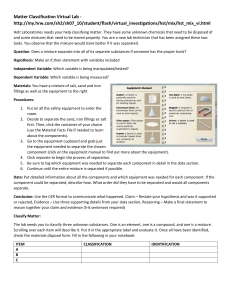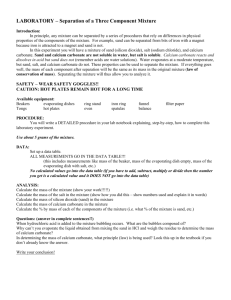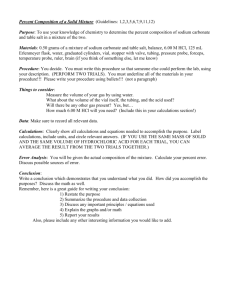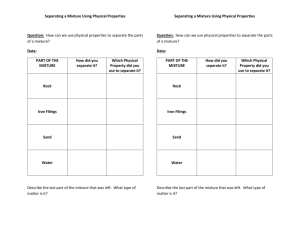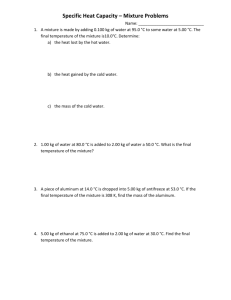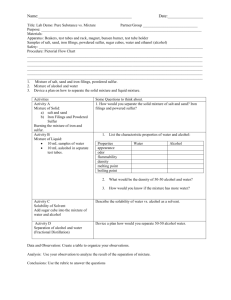LABORATORY – Separation of a Three Component Mixture
advertisement
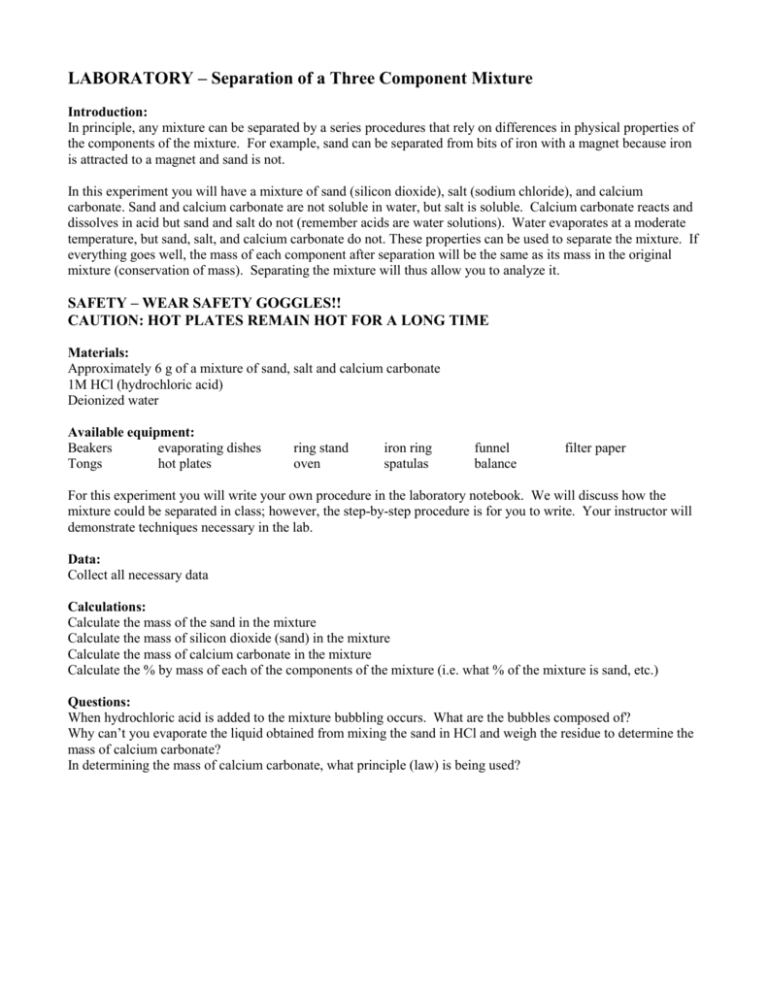
LABORATORY – Separation of a Three Component Mixture Introduction: In principle, any mixture can be separated by a series procedures that rely on differences in physical properties of the components of the mixture. For example, sand can be separated from bits of iron with a magnet because iron is attracted to a magnet and sand is not. In this experiment you will have a mixture of sand (silicon dioxide), salt (sodium chloride), and calcium carbonate. Sand and calcium carbonate are not soluble in water, but salt is soluble. Calcium carbonate reacts and dissolves in acid but sand and salt do not (remember acids are water solutions). Water evaporates at a moderate temperature, but sand, salt, and calcium carbonate do not. These properties can be used to separate the mixture. If everything goes well, the mass of each component after separation will be the same as its mass in the original mixture (conservation of mass). Separating the mixture will thus allow you to analyze it. SAFETY – WEAR SAFETY GOGGLES!! CAUTION: HOT PLATES REMAIN HOT FOR A LONG TIME Materials: Approximately 6 g of a mixture of sand, salt and calcium carbonate 1M HCl (hydrochloric acid) Deionized water Available equipment: Beakers evaporating dishes Tongs hot plates ring stand oven iron ring spatulas funnel balance filter paper For this experiment you will write your own procedure in the laboratory notebook. We will discuss how the mixture could be separated in class; however, the step-by-step procedure is for you to write. Your instructor will demonstrate techniques necessary in the lab. Data: Collect all necessary data Calculations: Calculate the mass of the sand in the mixture Calculate the mass of silicon dioxide (sand) in the mixture Calculate the mass of calcium carbonate in the mixture Calculate the % by mass of each of the components of the mixture (i.e. what % of the mixture is sand, etc.) Questions: When hydrochloric acid is added to the mixture bubbling occurs. What are the bubbles composed of? Why can’t you evaporate the liquid obtained from mixing the sand in HCl and weigh the residue to determine the mass of calcium carbonate? In determining the mass of calcium carbonate, what principle (law) is being used? Laboratory Notebook: As always – name/lab partner, title, purpose Procedure: Write a step-by-step procedure for this lab. You may use numbers or bullets BE SURE TO BE CLEAR IN YOUR INSTRUCTIONS Data: All data collected in the lab entered in this section Calculations: All calculations with equations represented in words followed by substitution of numbers Questions: Answer the questions in complete sentences. (You do not need to rewrite the question.)

